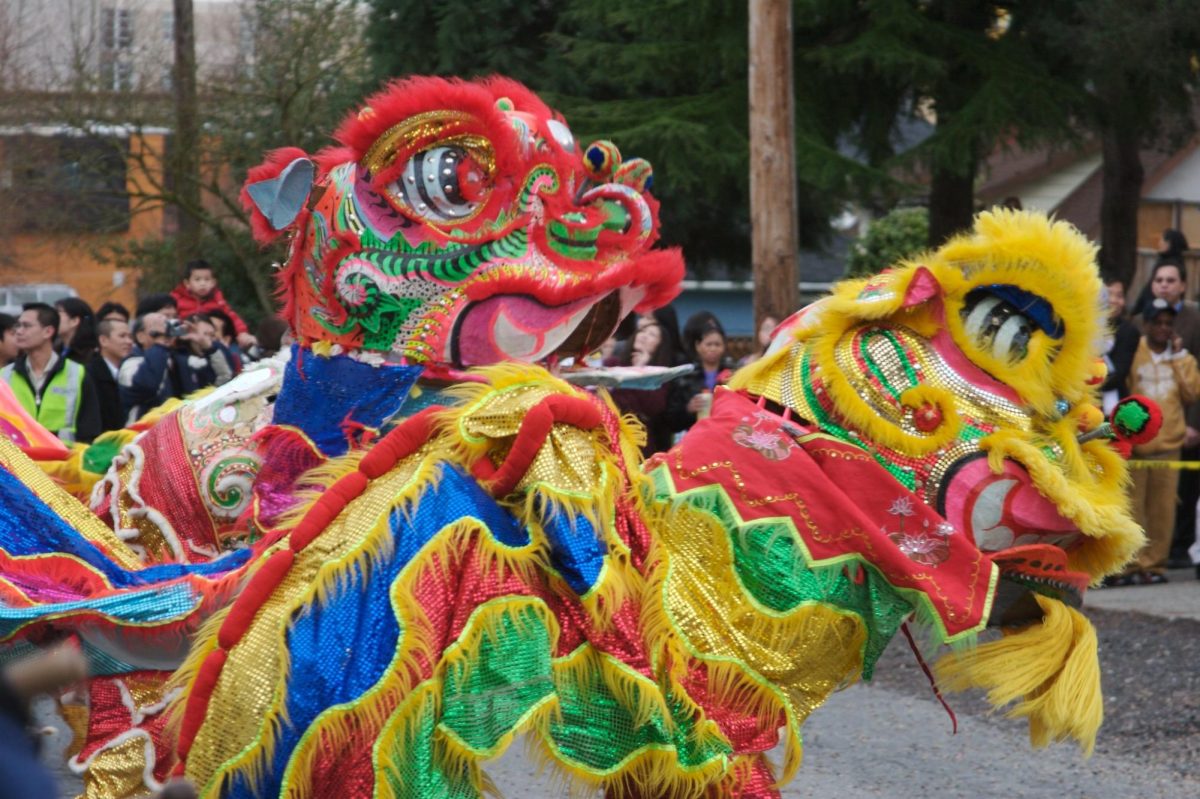Starting on Feb. 10th and ending on the 24th of 2024, Lunar New Year celebrations are in full swing. The new year begins on the first new moon of the lunar calendar and ends with the first full moon. Celebrations start with a Lunar New Year’s Eve reunion dinner, with a spread of dishes that each symbolize something different and ends with the Lantern Festival, with several celebrations in between.
The Lunar New Year tradition is said to be about 3,500 years old. There is no recorded beginning date; however, many believe the holiday originated in the Shang Dynasty (1600-1046 BC). There are many myths about what started the Lunar New Year. A popular one is about a mythical beast named Nian that would eat livestock, crops and people on New Year’s Eve. In an attempt to stop him, the people would leave food out for him to prevent him from his destruction. Later, the myth says that a wise old man figured out that the beast was scared of the color red and loud noises, such as firecrackers. This caused people to put red decorations, like lanterns and scrolls, everywhere and make loud noises to keep Nian from attacking.
Each Lunar Year begins the year of a different animal, one of the twelve in the Chinese zodiac. Each of these animals have been assigned characteristics that are claimed to reflect the personalities of people born in the animal’s designated year. For 2024, the animal is the dragon. The dragon has been given the traits of being charismatic, powerful, and naturally lucky. The others are a rat, an ox, a tiger, a rabbit, a snake, a horse, a goat, a monkey, a rooster, a dog, and a pig. It is said that the Jade Emperor called a race of these animals on his birthdays to create these signs. It is also said that he created these animals to give his people a proper calendar.
Several foods are made and enjoyed during Lunar New Year celebrations, each with its own unique meaning. For instance, fish is said to increase your prosperity in the new year, dumplings symbolize wealth, and long noodles symbolize happiness and longevity. Another big part of Lunar New Year celebrations is red envelopes. These envelopes are typically given from older people to younger, unmarried people, holding money and symbolizing good luck.
Lunar New Year is also an excellent time to spend with family members. Maisie McGowen, ’27, says, “My favorite part of Lunar New Year is watching other people get excited about the celebration. We all show so much appreciation for the amount of time my aunts and uncles spend cooking the food, and everyone’s reactions when the dishes are brought out is joyous for me.” The holiday is a lovely time to see loved ones and celebrate the New Year.
Overall, the Lunar New Year is a jubilant holiday filled with timeless traditions. The holiday is a fantastic way to celebrate with loved ones and to make memories that will last a lifetime.




















